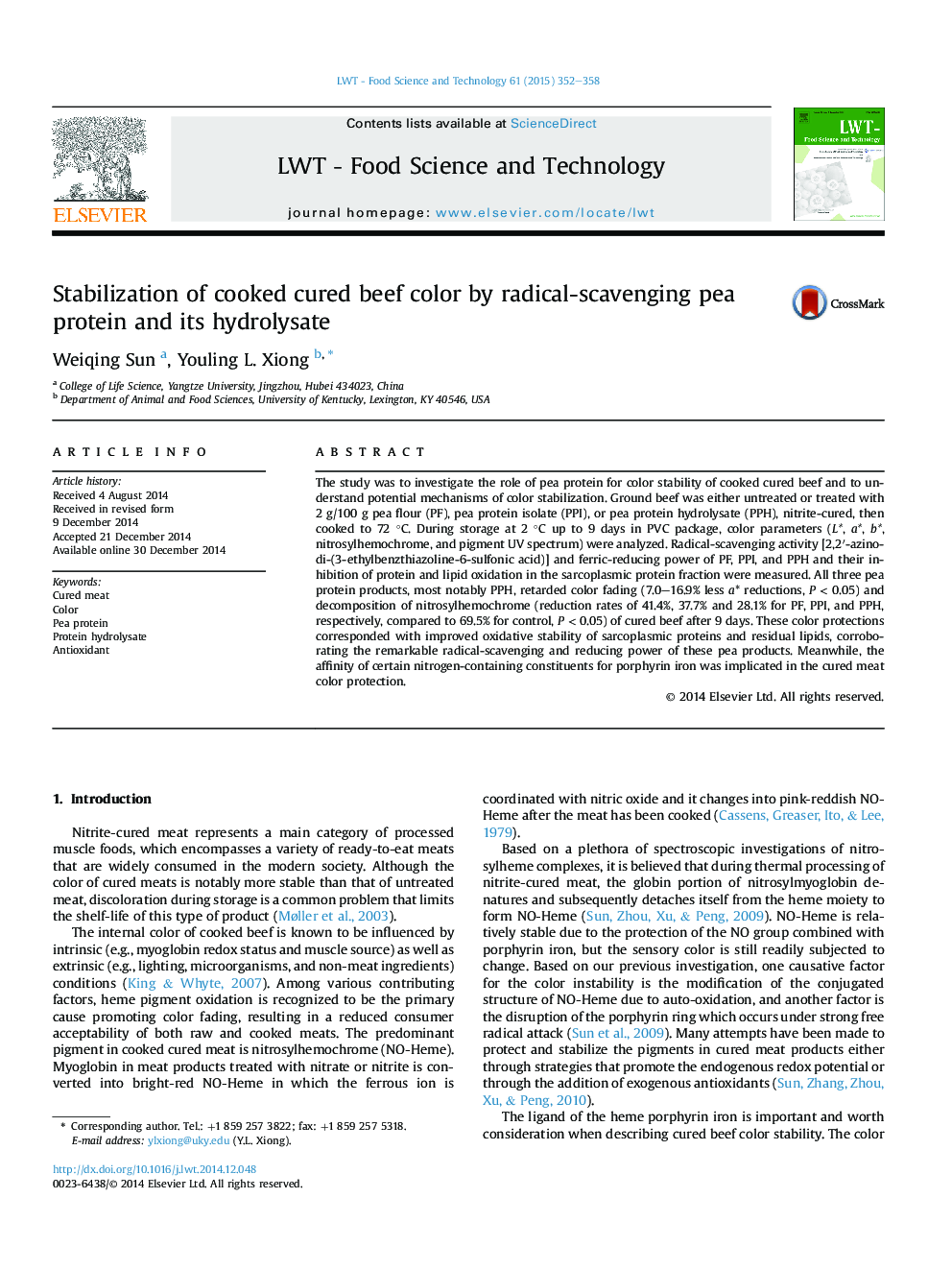| کد مقاله | کد نشریه | سال انتشار | مقاله انگلیسی | نسخه تمام متن |
|---|---|---|---|---|
| 6401147 | 1330879 | 2015 | 7 صفحه PDF | دانلود رایگان |
- Pea protein hydrolysate (PPH) stabilizes cured meat color.
- Color stability is attributed to PPH's radical scavenging effect.
- Pea peptides have affinity for nitrosylhemochrome.
The study was to investigate the role of pea protein for color stability of cooked cured beef and to understand potential mechanisms of color stabilization. Ground beef was either untreated or treated with 2 g/100 g pea flour (PF), pea protein isolate (PPI), or pea protein hydrolysate (PPH), nitrite-cured, then cooked to 72 °C. During storage at 2 °C up to 9 days in PVC package, color parameters (L*, a*, b*, nitrosylhemochrome, and pigment UV spectrum) were analyzed. Radical-scavenging activity [2,2â²-azino-di-(3-ethylbenzthiazoline-6-sulfonic acid)] and ferric-reducing power of PF, PPI, and PPH and their inhibition of protein and lipid oxidation in the sarcoplasmic protein fraction were measured. All three pea protein products, most notably PPH, retarded color fading (7.0-16.9% less a* reductions, P < 0.05) and decomposition of nitrosylhemochrome (reduction rates of 41.4%, 37.7% and 28.1% for PF, PPI, and PPH, respectively, compared to 69.5% for control, P < 0.05) of cured beef after 9 days. These color protections corresponded with improved oxidative stability of sarcoplasmic proteins and residual lipids, corroborating the remarkable radical-scavenging and reducing power of these pea products. Meanwhile, the affinity of certain nitrogen-containing constituents for porphyrin iron was implicated in the cured meat color protection.
Journal: LWT - Food Science and Technology - Volume 61, Issue 2, May 2015, Pages 352-358
